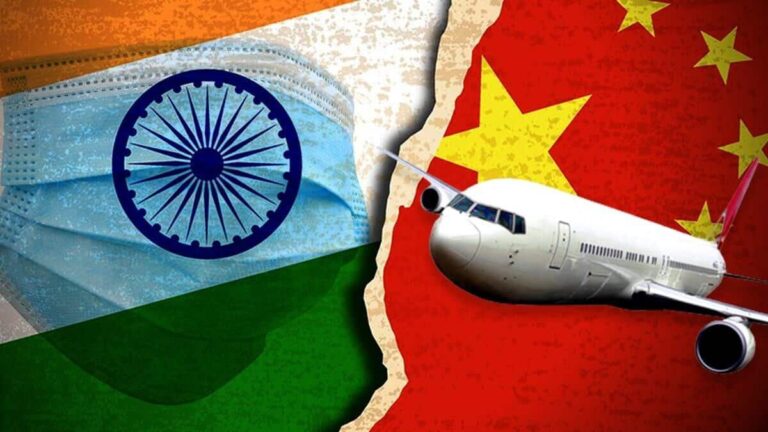India and China have agreed to expedite the resumption of direct flights between the two countries, marking a significant step forward as bilateral ties show signs of improvement. The decision, announced by government officials on Tuesday, aims to enhance connectivity and facilitate travel for business and tourism amid a gradual easing of diplomatic tensions. This move comes after months of negotiations and follows efforts to restore normalcy in the wake of disruptions caused by the COVID-19 pandemic and geopolitical frictions.
India and China Prioritize Restoration of Direct Flights to Boost Bilateral Travel and Trade
Renewed diplomatic engagements between India and China have paved the way for a swift restoration of direct flight services, signaling a significant milestone in bilateral cooperation. Both governments acknowledged the critical role that seamless air connectivity plays in fostering not only tourism but also facilitating crucial commercial exchanges. The move comes amid a broader agenda to stabilize and enhance economic ties, boosting confidence among businesses and travelers alike.
Key aspects highlighted in the agreement include:
- Expanded flight frequencies to meet growing demand post-pandemic;
- Streamlined visa facilitation to support smoother cross-border movement;
- Enhanced safety protocols in compliance with international aviation standards;
- Collaboration on tourism promotion to attract visitors from both nations.
| Sector | Expected Impact |
|---|---|
| Tourism | Increase in visitor flow by 30% within a year |
| Trade | Facilitation of faster cargo transit and enhanced trade volumes |
| Business Travel | Easier mobility for entrepreneurs and investors |
Key Challenges and Operational Measures for a Smooth Resumption of Air Connectivity
As India and China pave the way for restoring direct air connectivity, several challenges must be addressed to ensure seamless operations. Health and safety protocols continue to be paramount, requiring airlines and airports to implement stringent testing, sanitation, and contact tracing measures. Additionally, aligning the regulatory frameworks and standardizing passenger documentation across both countries is crucial to minimize bureaucratic delays. Both nations are also faced with logistical constraints such as limited flight frequencies and slot availability at congested airports, which demand coordinated scheduling and resource allocation between aviation authorities.
Operational efficiency hinges on enhanced communication and collaboration among carriers, ground handlers, and government bodies. Airlines are exploring flexible ticketing policies and optimized crew rotations to adapt to fluctuating demand and regulatory changes. Furthermore, innovative technology such as digital health passports and AI-powered passenger flow management systems are being prioritized to expedite processing times and curb potential disruptions. Below is a summary of the primary operational measures being considered:
| Challenge | Operational Measure |
|---|---|
| Health & Safety Compliance | Mandatory testing & sanitation protocols |
| Regulatory Alignment | Mutual recognition of documentation |
| Flight Slot Management | Coordinated scheduling & traffic sharing |
| Passenger Flow | Digital health passports & AI systems |
| Operational Flexibility | Adjustable ticketing policies & crew shifts |
Policy Recommendations to Sustain Improved Diplomatic Relations and Enhance Cross-Border Mobility
To ensure the momentum in diplomatic progress translates into lasting improvements, policymakers must adopt measures that institutionalize cooperation and facilitate seamless mobility between India and China. Prioritizing the establishment of a bilateral aviation task force can streamline regulatory alignments and expedite the reopening of direct flight routes. Additionally, implementing advanced health safety protocols jointly recognized by both countries will reassure travelers and stakeholders, fostering confidence in the resumption of cross-border travel.
Key initiatives to consider include:
- Mutual visa facilitation schemes targeting business travelers and tourists.
- Joint infrastructure investments in airports to handle increased traffic efficiently.
- Regular diplomatic dialogues focused on transport and trade facilitation.
- Information-sharing platforms to pre-empt and resolve operational challenges.
| Policy Area | Proposed Action | Expected Impact |
|---|---|---|
| Flight Operations | Joint scheduling and route planning | Improved frequency and reliability |
| Health & Safety | Mutual recognition of COVID-19 protocols | Traveler confidence and safety assurance |
| Visa Policies | Bilateral visa waiver or e-visa systems | Simplified travel processes |
| Infrastructure | Airport modernization and capacity enhancement | Efficient handling of mobile populations |
Final Thoughts
The agreement between India and China to expedite the resumption of direct flights marks a significant step in the gradual thawing of bilateral relations. As both nations navigate complex geopolitical dynamics, the restoration of air connectivity is expected to boost trade, tourism, and people-to-people contacts, signaling a cautious yet positive shift in ties. Stakeholders and observers will be closely watching how this development impacts the broader framework of cooperation and engagement between the two Asian giants in the months ahead.




